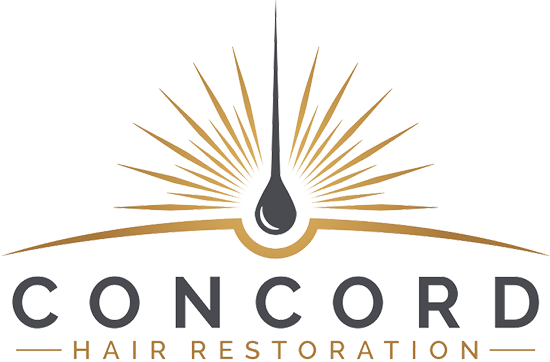No, shaving the entire head is not always necessary for a hair transplant. There are different techniques used in hair transplantation, and the specific approach can vary depending on the surgeon and the individual’s needs.
In a traditional hair transplant method called “strip harvesting” or FUT (follicular unit transplantation), a strip of hair-bearing skin is removed from the back or sides of the scalp, where hair is usually thicker. The surrounding hair is typically left long to cover the donor area, so shaving the entire head is not required.
In another technique called “follicular unit extraction” (FUE), individual hair follicles are extracted from the donor area using a punch-like instrument. With FUE, the hair can be shaved or trimmed very short in the donor area to facilitate the extraction process. However, the rest of the hair on the scalp can be left untouched.
Some clinics may prefer to shave the recipient area, where the transplanted hair will be placed, to ensure better visibility and ease of access during the procedure. However, in certain cases, the surgeon may be able to work around the existing hair without shaving it entirely.
It’s essential to consult with a qualified hair transplant surgeon who can assess your specific situation and provide guidance on the most suitable technique and approach for your hair transplant procedure.
Why do people think they have to shave their head for a hair transplant?
There might be a common misconception that shaving the head is necessary for a hair transplant, but it’s not always the case.
The idea behind shaving the head is to ensure easier access to the donor area, where the healthy hair follicles are harvested from. However, there are different techniques and approaches to hair transplantation, and not all of them require shaving the entire head.
In traditional hair transplant methods like Follicular Unit Transplantation (FUT), a strip of hair-bearing skin is removed from the donor area, typically located at the back of the head. In this case, shaving a narrow strip of hair in that specific area is usually sufficient.
On the other hand, newer techniques like Follicular Unit Extraction (FUE) allow for individual extraction of hair follicles without the need for a strip of skin. With FUE, the hair transplant surgeon can extract follicles one by one using tiny punches, which means only small puncture wounds are created. In such cases, shaving the entire head may not be necessary. The hair in the donor area can be trimmed very short to facilitate the extraction process, but the rest of the hair can be left untouched.
Ultimately, the decision to shave or trim the hair for a hair transplant depends on the specific technique being used, the preferences of the surgeon, and the individual circumstances of the patient. It’s important to consult with a qualified hair transplant specialist who can guide you through the procedure and explain the best approach for your particular case.
Women, don’t worry – you don’t have to shave your head for a hair transplant procedure
I’m here to inform you that women do not have to shave their heads for a hair transplant procedure. Hair transplant techniques have advanced significantly over the years, allowing for more flexibility and options for both men and women seeking hair restoration.
One common method used for hair transplant procedures is called Follicular Unit Extraction (FUE). FUE involves individually extracting hair follicles from a donor area (typically the back or sides of the scalp) and transplanting them into the areas where hair loss or thinning has occurred. The great advantage of FUE is that it does not require a linear donor strip, as is the case with the older Follicular Unit Transplantation (FUT) method.
In FUE, the extraction process involves shaving the donor area to facilitate the precise removal of individual follicles. However, the rest of the hair can be left at a longer length, allowing it to cover the shaved area and provide adequate coverage during the healing process.
This means that women undergoing an FUE hair transplant can maintain their existing hair length and style, ensuring minimal disruption to their appearance.
It’s important to note that the specific requirements and recommendations may vary depending on the individual’s unique circumstances and the preferences of the hair transplant surgeon. Consulting with a qualified hair transplant specialist will provide you with personalized advice and guidance tailored to your specific needs.
In summary, women do not need to shave their entire heads for a hair transplant procedure, thanks to advancements in techniques like FUE. This allows women to maintain their hair length and style while undergoing the procedure.

Are you struggling with hair loss or thinning hair?
Don’t let it affect your confidence and self-esteem any longer. Take action today and reclaim a fuller, natural-looking head of hair with the help of Concord Hair Restoration in San Diego and Los Angeles.
At Concord Hair Restoration, we understand the emotional impact of hair loss and the desire to restore your hair to its former glory. That’s why we offer state-of-the-art hair transplant procedures that are tailored to your unique needs and goals. Our experienced and skilled team is committed to delivering exceptional results and ensuring your comfort throughout the entire process.
Now is the perfect time to take the first step towards hair restoration. We invite you to schedule a free consultation with our experts. During this consultation, we will assess your hair loss situation, discuss your goals, and provide you with personalized recommendations.
Imagine waking up each morning with a head full of thick, healthy hair that boosts your confidence and makes you feel like your best self. With Concord Hair Restoration, that dream can become a reality.
Don’t wait any longer to address your hair loss concerns. Contact us today or visit our website to book your free consultation. Take control of your hair and your life. Let us help you achieve the natural-looking results you’ve always wanted.

